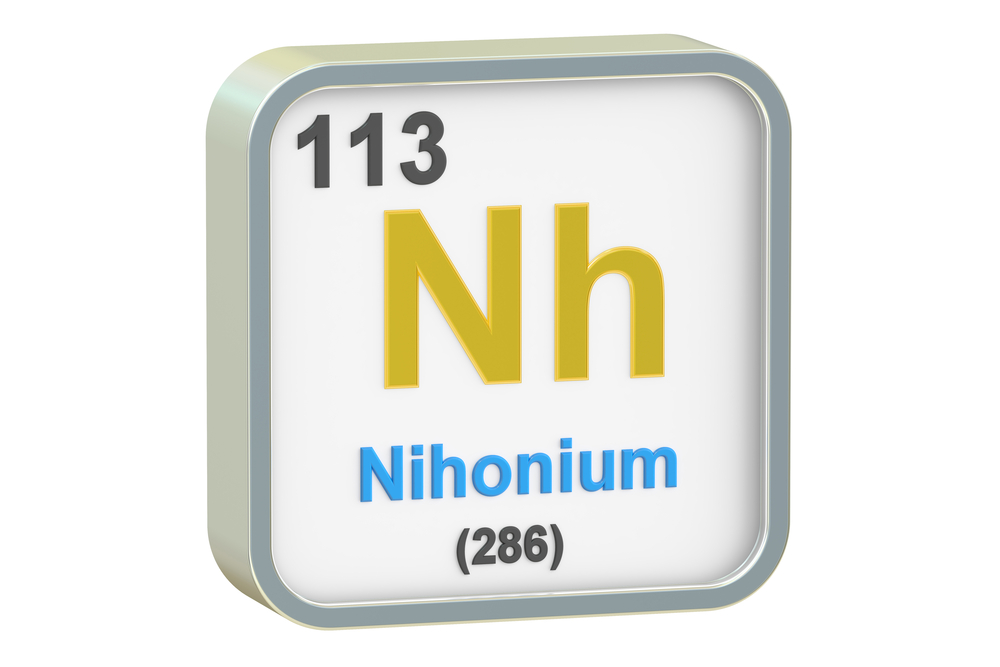Facts About Nihonium (Element 113)

Nihonium is a radioactive, synthetic element about which little is known. It is classified as a metal and is expected to be solid at room temperature.
The element, No. 113 on the Periodic Table of Elements, had previously been designated ununtrium, a placeholder name that means one-one-three in Latin. In November 2016, the International Union of Pure and Applied Chemistry (IUPAC) approved the name nihonium for element 113.
Scientists with Japan's RIKEN Nishina Center for Accelerator-Based Science proposed the element name nihonium, which is one way to say "Japan" in Japanese and means "the land of the rising sun," according to the IUPAC. Nihonium's atomic symbol is Nh.
The IUPAC also approved names for elements 115 (moscovium, with atomic symbol Mc), 117 (tennessine, Ts) and 118 (oganesson, Og).
Discovery
Kosuke Morita and his colleagues created the elusive element on Aug. 12, 2012, after colliding zinc nuclei together in a thin layer of bismuth. Like other superheavy elements, after 113 was created, it quickly decayed, ultimately turning element 113 into 111, and then 109, 107, 105, 103 and finally into element 101, according to Morita.
Nihonium has six isotopes with known half-lives. The most stable is 286Nh, with a half-life of about 20 seconds.
The atomic weight for manmade transuranium elements is based on the longest-lived isotope. These atomic weights should be considered provisional since a new isotope with a longer half-life could be produced in the future. [See Periodic Table of the Elements]
Just the facts
Atomic Number: 113 Atomic Symbol: Nh Atomic Weight: [286] Melting Point: Unknown Boiling Point: Unknown
Sources
To produce nihonium, Element 115 — now called moscovium — must first be made. Atoms of americium (Element 95) are bombarded with ions of calcium (Element 20) in a cyclotron, which produces moscovium. Then, moscovium quickly alpha decays into nihonium.
Uses of nihonium
Only a few atoms of nihonium have ever been made, and they are only used in scientific study.
Additional resources
Sign up for the Live Science daily newsletter now
Get the world’s most fascinating discoveries delivered straight to your inbox.
Tim Sharp was Live Science’s reference editor from 2012 to 2018. Tim received a degree in Journalism from the University of Kansas. He worked for a number of other publications, including The New York Times, Des Moines Register and Tampa Bay Times, and as an editor for the Hazelden Foundation, among others.










